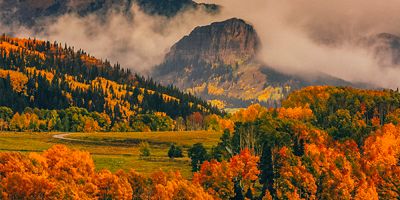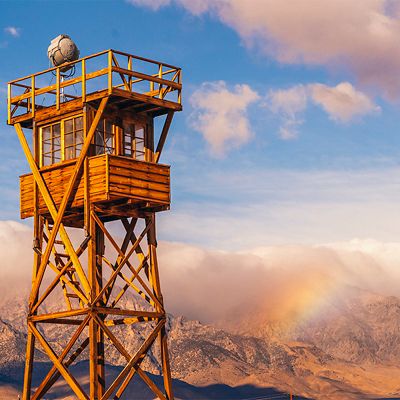There’s just something magical about the beach. Whether it’s a stretch of Pacific coast where whales swim nearby, a sugar-sand stretch along the Gulf of Mexico, or a towering cliff on Lake Superior, the special places where water meets land have beckoned visitors for millennia. The National Park Service recognizes the allure of the country’s beaches, too, with a special public-land designation: national seashores and national lakeshores. Today, 10 national seashores and three national lakeshores provide fantastic destinations for paddling, swimming, boating, beachcombing, and just watching the waves roll in.
What are national seashores and national lakeshores?
Put simply, these shoreline areas protect the natural ecosystem along oceans and lakes, providing habitat for thousands of land- and water-based animals and plants. They also offer outstanding opportunities for water-based recreation. Congress named the first national seashore at Cape Hatteras, North Carolina, in 1937, after locals advocated for the protection of the Atlantic beaches there. Studies in the 1950s revealed that high demand for waterfront property and private development was snapping up coastal land, inspiring the government to name nine more national seashores by the end of the ’70s. That enthusiasm extended to freshwater shores, too, as Congress designated the first national lakeshore at Michigan’s Pictured Rocks in 1966.
Who manages them?
National seashores and lakeshores fall under the umbrella of the National Park Service.
What can you do there?
If it’s fun and on the water, you can probably do it at a national seashore or lakeshore. Kayaking, canoeing, standup paddleboarding, fishing, swimming, boating—you name it, there’s a place for it. There are also plenty of land-based activities on offer, like hiking, camping, and picnicking on the beach. These shoreline preserves also protect some fascinating pieces of the nation’s history, from 150-year-old lighthouses to archeological mounds made by first inhabitants.
Seashores & Lakeshores at a Glance
The country’s 13 protected shorelines include the Pacific and Atlantic oceans, the Gulf of Mexico, and two Great Lakes. Take a closer look below at what they have to offer.
Atlantic Ocean
Assateague Island National Seashore, MD/VA
Covering a portion of a 37-mile-long Atlantic barrier island, Assateague features maritime forests, salt marshes, and sandy beaches.
Popular activities: Crabbing, fishing, horseback riding
Fun fact: Two herds of wild horses famously live here.
Canaveral National Seashore, FL
This barrier island shoreline on the Atlantic coast of central Florida boasts the biodiverse estuary of Mosquito Lagoon, plus coastal hammocks, pine woodlands, and 24 miles of beach.
Popular activities: Kayaking, boating, hiking, fishing
Fun fact: Canaveral is a primo spot for viewing rocket launches from nearby Cape Canaveral Space Force Station.
Cape Cod National Seashore, MA
A favorite vacation destination for New Englanders, Cape Cod protects the longest continuous stretch of undeveloped shoreline on the East Coast. Here, you can explore beaches, marshes, and cranberry bogs as well as historic lighthouses and homes.
Popular activities: Swimming, hiking, biking
Fun fact: As the seal population here has increased, so have sightings of great white sharks. Swimmers should be alert for signs of this fascinating predator and follow the park’s shark safety tips.
Cape Hatteras National Seashore, NC
America’s first national seashore protects parts of three barrier islands—including sand dunes, sandy beaches, marshes, and forests—along what’s known as the Outer Banks.
Popular activities: Swimming, hiking, kayaking, climbing lighthouses
Fun fact: Five species of sea turtles (loggerhead, green, leatherback, Kemp’s ridley, and hawksbill) nest on the beaches here.
Cape Lookout National Seashore, NC
This preserve’s 56 miles of undeveloped beaches across several barrier islands lie 3 miles off the shore of the southern Outer Banks.
Popular activities: Swimming, windsurfing, paddling
Fun fact: The “shelling,” or collecting seashells, is great here—comb the beach early in the morning or at low tide to find Scotch bonnets, knobbed whelks, and scallops.
Cumberland Island National Seashore, GA
Seventeen straight miles of pristine beach are just one of the highlights on Georgia’s largest barrier island—there are also historic buildings to tour (including the First African Baptist Church and Plum Orchard Mansion) and salt marshes and maritime forests to explore.
Popular activities: Hiking, kayaking, boating, fishing, camping
Fun fact: Cumberland Island includes 9,906 acres of federal wilderness.
Fire Island National Seashore, NY
A mix of beaches, dunes, maritime forests, and wetlands, this barrier island preserve off the coast of Long Island is home to wildlife like horseshoe crabs, coyotes, piping plovers, and seals.
Popular activities: Camping, backpacking, fishing, boating, swimming
Fun fact: Fire Island has been known as a sanctuary and gathering spot for the LGBTQ+ community since the late 1800s.










